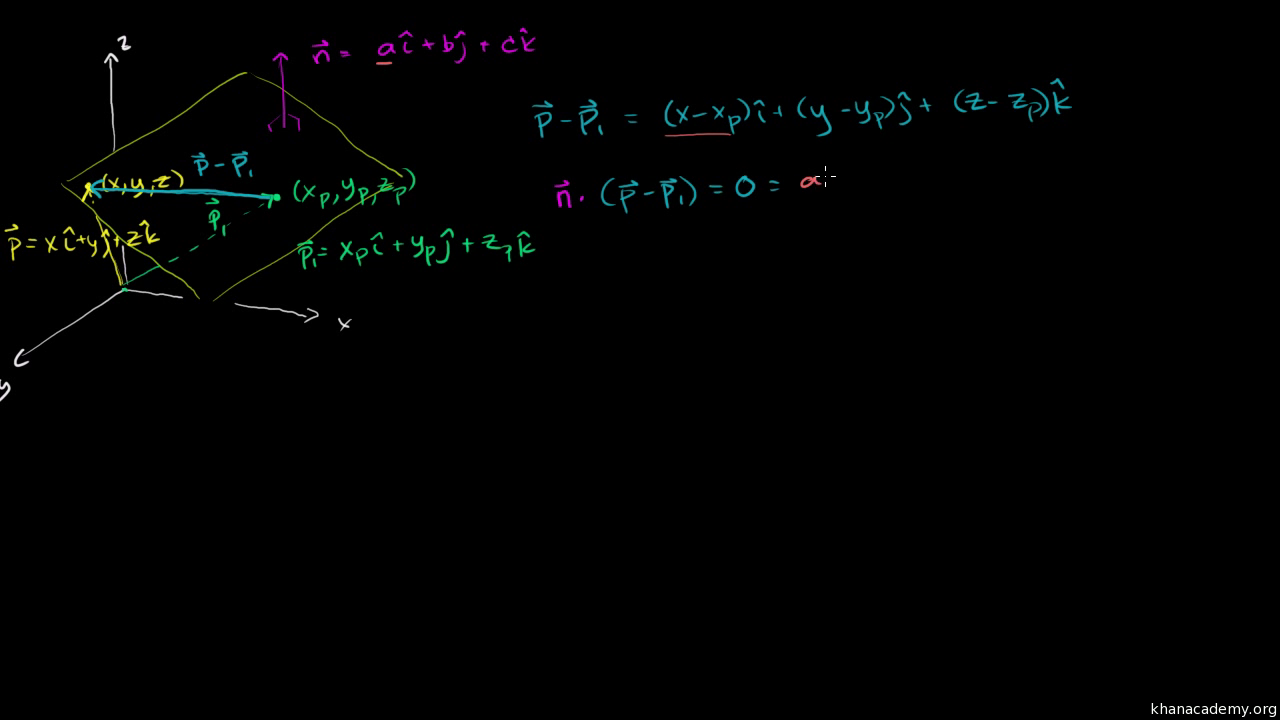

If v1 and v2 are not already normalised then multiply by |v1||v2| gives: In Python, the row vector and column vector. For example, if you think the answer is vector ñ (1,2,3), you should write n (1, 2, 3) (parentheses make n be a tuple). Tuples are objects with syntax just like an ordered n-tuple in math. Your vector should be defined as a Pythons tuple object named n. If v1 and v2 are already normalised then |v1||v2|=1 so, Question: Question 3 Find a vector ñ which is orthogonal to the plane z 2x - 5y + 3. Page: cos(angle/2) = sqrt(0.5*(1 + cos (angle)))īecause |v1 x v2| = |v1||v2| sin(angle) we can normalise (v1 x v2) by dividingĪlso apply v1v2 = |v1||v2| cos(angle)so, Now substitute half angle trig formula on this Multiply x,y,z and w by 2* cos(angle/2) (this will de normalise the quaternion 'householder': computes a product of Householder reflectors ( householderproduct ). So substituting in quaternion formula gives: Page: sin(angle/2) = 0.5 sin(angle) / cos(angle/2) We can use this half angle trig formula on this The axis angle can be converted to a quaternion as follows, let x,y,z,w beĮlements of quaternion, these can be expressed in terms of axis angle as explained This is a bit messy to solve for q, I am therefore grateful to minorlogic for the following approach which converts the axis angle result to a quaternion: p 1= is a vector representing a point before being rotated.q = is a quaternion representing a rotation.p 2 = is a vector representing a point after being rotated.However, to rotate a vector, we must use this formula: This almost works as explained on this page. One approach might be to define a quaternion which, when multiplied by a vector, rotates it: In Least squares we have equation of form. We can see the direct benefit of having a matrix with orthonormal column vectors is in least squares. a space with an orthonormal basis behaves like the. In theġ80 degree case the axis can be anything at 90 degrees to the vectors so there given an orthogonal basis for a vector space V, we can always nd an orthonormal basis for V by dividing each vector by its length (see Example 2 and 3 page 256) 5. Not matter and can be anything because there is no rotation round it. X v2 will be zero because sin(0)=sin(180)=0. If the vectors are parallel (angle = 0 or 180 degrees) then the length of v1

So, if v1 and v2 are normalised so that |v1|=|v2|=1, then, Orthogonal Vector Calculator Given vector a a 1, a 2, a 3 and vector b b 1, b 2, b 3, we can say that the two vectors are orthogonal if their dot product is equal to zero. Two vectors, the length of this axis is given by |v1 x v2| = |v1||v2| sin(angle). the axis is given by the cross product of the.Of the two (normalised) vectors: v1v2 = |v1||v2| cos(angle) the angle is given by acos of the dot product.Seeing as this vector is in R 4, we let the vector v ( v 1, v 2, v 3, v 4). This is easiest to calculate using axis-angle representation because: So I have to find all vectors that are orthogonal to u ( 1, 2, 2, 1). using:Īngle of 2 relative to 1= atan2(v2.y,v2.x) - atan2(v1.y,v1.x)įor a discussion of the issues to be aware of when using this formula see the page here. If we want a + or - value to indicate which vector is ahead, then we probably need to use the atan2 function (as explained on this page). In most math libraries acos will usually return a value between 0 and π ( in radians) which is 0° and 180°. Let us first find an orthogonal basis for W by the Gram-Schmidt orthogonalization process. In other words, it won't tell us if v1 is ahead or behind v2, to go from v1 to v2 is the opposite direction from v2 to v1. The only problem is, this won't give all possible values between 0° and 360°, or -180° and +180°. acos = arc cos = inverse of cosine function see trigonometry page. = 'dot' product (see box on right of page).

If v1 and v2 are normalised so that |v1|=|v2|=1, then, This is relatively simple because there is only one degree of freedom for 2D rotations. We first consider orthogonal projection onto a line.How do we calculate the angle between two vectors?


 0 kommentar(er)
0 kommentar(er)
